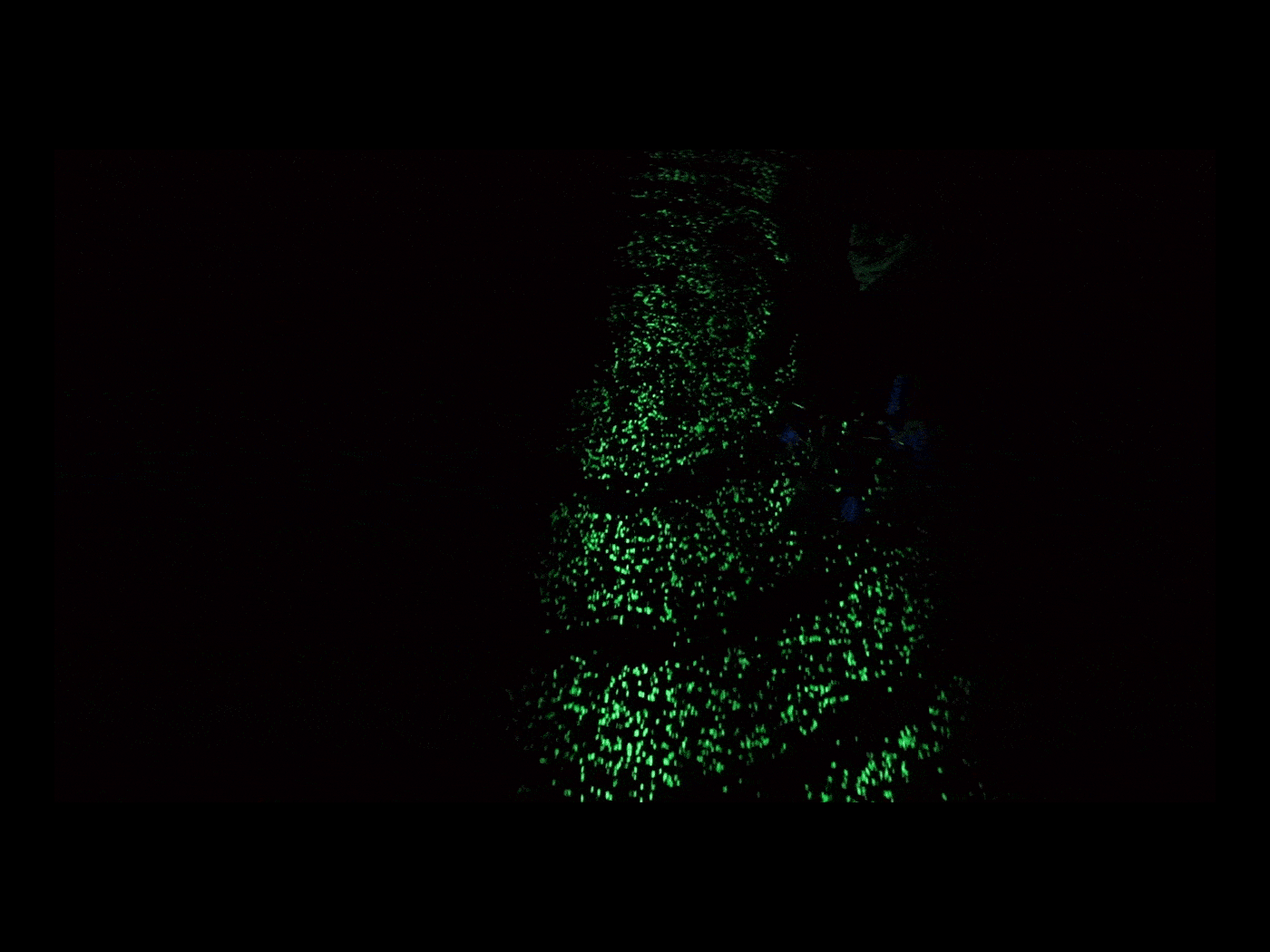Technology
Should NFTs Be Classified as Art? Wikipedia's Editors Vote 'No'
Makers of the free encyclopedia spar over the categorization for non-fungible tokens, the relatively new phenomenon sweeping the digital art world
New Tech Can Distinguish Brush Strokes of Different Artists
Researchers used 3-D scanning and A.I. to identify artists from tiny samples of their paintings
Ben Franklin Lives in Your Smartphone
The 18th-century inventor discovered concepts that impact modern technology
The Five Big Ways the James Webb Telescope Will Help Astronomers Understand the Universe
The highly awaited observatory is set to break new ground in many areas of astronomical research
A Look Back at Hubble's Interstellar Success
At the launch of the Webb Space Telescope, the legacy of America’s favorite eye in the sky is best remembered with a look at a Smithsonian artifact
The Very Real Effort to Track Killer Asteroids and Comets
In "Don't Look Up," researchers warn authorities about a comet hurtling towards Earth. Such a scenario isn’t just science fiction
Canon's New Image Sensor Can See in Almost-Total Darkness
The tech can capture images in only one-tenth of the brightness required by other devices
Engineers Pick the Ten Best STEM Toys to Give as Gifts This Year
These expert-approved gifts teach robotics, coding and engineering thinking through stories and play
What the History of 'Spirit Photography' Portends for the Future of Deepfake Videos
Today’s video hoaxes can be downright ugly. But image-makers have been fooling viewers from the beginning
Will Glow-in-the-Dark Materials Someday Light Our Cities?
Substances that persistently luminesce could be used in streets, sidewalks and buildings
This New Tool Lets You See Floods From Around the World, Dating Back to 1985
An innovative interactive map could aid future disaster planning, especially for vulnerable countries in the developing world
Futures
The Smithsonian's Arts and Industries Building re-opens on November 20 with a thought-provoking exploration of what lies ahead for humanity
In One Mission in October 1944, Two F6F Hellcats Shot Down a Record 15 Enemy Aircraft
U.S. Navy Pilots David McCampbell and Roy Rushing made history in a heroic air battle over the Leyte Gulf
Nearly 2,000 Chemicals—Some Potentially Harmful—Found in Vaping Aerosols
Researchers discover industrial chemicals, a pesticide and caffeine during analysis of popular vaping products
Five Things to Know About NASA's Lunar Rover 'VIPER'
The device will hunt for resources, including water, vital to future space exploration
X-Ray Technology Reveals Marie Antoinette's Censored Secret Correspondence
A combination of the chemical analysis and advanced data processing used could reveal many more lost writings or drawings
Fifty Years Ago, the First CT Scan Let Doctors See Inside a Living Skull
The invention came from an eccentric British engineer who worked at a company now better known for selling Beatles albums
The National Weather Service Began as a Crowdsourcing Experiment
Smithsonian Secretary Joseph Henry used an army of volunteers in what would eventually become the nation's weather forecasting operation
Vampire Bats Call Out to Friends to Share Blood Meals
After they prep bite sites to lap the blood out of live cows, females invite their roostmates to join them
A Brief History of the Sonogram
In the mid-1950s, a Scottish obstetrician became the first to apply ultrasound technology to a pregnant human abdomen
Page 13 of 27
:focal(1060x707:1061x708)/https://tf-cmsv2-smithsonianmag-media.s3.amazonaws.com/filer_public/72/42/7242d986-5d64-4eb2-9cb8-4a3e2bb374a8/gettyimages-1359848582.jpg)
:focal(694x527:695x528)/https://tf-cmsv2-smithsonianmag-media.s3.amazonaws.com/filer_public/25/24/2524817a-5186-4d65-b95f-8292f9a773bc/art_artist_brush_colors_colours_macro_paint_paint_brush-937596.jpg)
:focal(847x832:848x833)/https://tf-cmsv2-smithsonianmag-media.s3.amazonaws.com/filer_public/4c/5d/4c5d2a0a-ba6e-4c8b-89b9-1d5ba5b4ec4e/joseph_siffrein_duplessis_-_benjamin_franklin_-_google_art_project.jpeg)
/https://tf-cmsv2-smithsonianmag-media.s3.amazonaws.com/filer/e2/b1/e2b1ec8c-edab-4084-9771-c1ee2e556ecd/jwt-standingtall_image-credit-nasadesiree-stover_websocial.jpg)
:focal(640x427:641x428)/https://tf-cmsv2-smithsonianmag-media.s3.amazonaws.com/filer_public/c2/bd/c2bd7772-08f4-45c9-87c2-b48c4d1281b2/s31-03-009.jpeg)
:focal(800x602:801x603)/https://tf-cmsv2-smithsonianmag-media.s3.amazonaws.com/filer_public/8a/69/8a69709f-38a1-4dba-a38e-f1d2e212ddc6/gettyimages-160936205_web.jpg)
:focal(2736x1707:2737x1708)/https://tf-cmsv2-smithsonianmag-media.s3.amazonaws.com/filer_public/90/88/908826f6-ed2e-4938-8582-a855db0c3ea1/night_photography_in_progress__32978564753.jpeg)
:focal(3976x2651:3977x2652)/https://tf-cmsv2-smithsonianmag-media.s3.amazonaws.com/filer_public/4a/eb/4aebd392-2b94-4566-a9af-96d13dd65f75/2021_top10_stemgifts_a.jpg)
:focal(400x301:401x302)/https://tf-cmsv2-smithsonianmag-media.s3.amazonaws.com/filer_public/84/65/8465e15a-af3d-474e-99fc-489683eb20a5/dfopener.jpg)

:focal(1943x1600:1944x1601)/https://tf-cmsv2-smithsonianmag-media.s3.amazonaws.com/filer_public/a6/10/a6109e31-c311-442c-8cf2-77ce49f24c53/gettyimages-1234224468.jpg)
:focal(1600x899:1601x900)/https://tf-cmsv2-smithsonianmag-media.s3.amazonaws.com/filer_public/4c/5a/4c5aed0d-e383-4b33-a2e5-d6ba1000fae3/futures-artist_rendering.jpeg)
:focal(1435x1093:1436x1094)/https://tf-cmsv2-smithsonianmag-media.s3.amazonaws.com/filer_public/c7/4a/c74a5473-0de9-4847-96c0-043a64f66f8b/gettyimages-3090072.jpg)
:focal(600x400:601x401)/https://tf-cmsv2-smithsonianmag-media.s3.amazonaws.com/filer_public/94/98/9498b13e-58a5-466c-923d-696b0916d40e/vaping100621.jpg)
:focal(492x277:493x278)/https://tf-cmsv2-smithsonianmag-media.s3.amazonaws.com/filer_public/42/09/4209dc88-850a-44bf-a47b-03bdbbb1f538/viper_on_moon_vis.jpeg)
:focal(800x602:801x603)/https://tf-cmsv2-smithsonianmag-media.s3.amazonaws.com/filer_public/65/f1/65f1daec-17b0-4d95-963e-3102756d2c78/dsc08396_web.jpg)
:focal(741x88:742x89)/https://tf-cmsv2-smithsonianmag-media.s3.amazonaws.com/filer_public/33/1a/331a2367-0640-42b6-ade3-947ce4ac5933/godfrey_hounsfield.jpeg)
/https://tf-cmsv2-smithsonianmag-media.s3.amazonaws.com/filer/c4/2d/c42d6cda-ac4a-4dc1-bf0c-a1ea7d2c3d87/opener.jpg)
:focal(800x602:801x603)/https://tf-cmsv2-smithsonianmag-media.s3.amazonaws.com/filer_public/12/4d/124dd134-5545-47e9-9950-eb17c73040ac/close-up-1-vampire-bat-c-simon-ripperger_web.jpg)
:focal(512x385:513x386)/https://tf-cmsv2-smithsonianmag-media.s3.amazonaws.com/filer_public/90/0b/900b6422-dbec-4369-a3e1-c21ca7bc8d5f/gettyimages-1219040940.jpg)